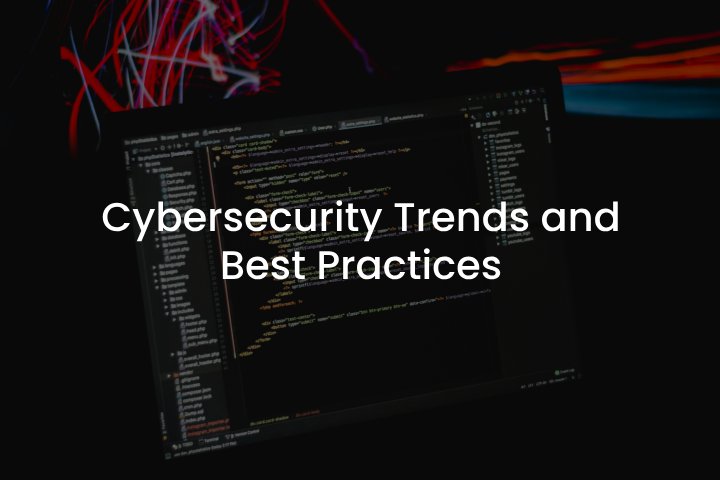
Cybersecurity Trends and Best Practices: Compliance, Innovation, and Threat Prevention
Within the past decades, worldwide digitization has led to a pressing need to adopt more advanced cybersecurity measures for businesses regardless of their size. With cyber threats becoming more sophisticated, organizations must focus on new technologies and strategies that will protect their assets at all costs.
This article discusses the latest trends in cybersecurity technologies, threat prevention strategies, and some of the existing compliance standards in the U.S. and Europe.
Compliance Standards in the U.S. and Europe
Compliance with regulatory policies is important for organizations, especially given the increasing demands from the governments. In the U.S., regulations like the Health Insurance Portability and Accountability Act (HIPAA) have strict standards for protecting sensitive healthcare information. The Federal Information Security Management Act (FISMA) further requires that federal agencies secure their information systems against cyber threats. A 2022 report by the U.S. Government Accountability Office indicated that federal agencies have faced significant challenges in maintaining compliance with FISMA requirements.
In Europe, the General Data Protection Regulation (GDPR) has established data protection standards that affect any organization handling the personal data of EU citizens even though a company is in the EU zone or outside. GDPR requires organizations to take all the necessary measures, both technical and organizational, to protect the personal data of an individual.
Innovations in Cybersecurity Technologies
Integration of artificial intelligence (AI) and machine learning (ML) is viewed today as the most-discussed topic. AI and ML solutions are expected to help organizations analyze and process larger amounts of data faster and detect unusual patterns that might reveal a potential security threat. Automation of processes like threat detection and response reduces the time it takes to address the vulnerabilities, which is critical considering how different and powerful cyber-attacks are becoming.
Another trend is the popularization of extended detection and response (XDR) solutions. XDR unites different security tools into a single system, therefore providing improved more effective detection across different environments. Research from the Enterprise Strategy Group shows that around 80% of organizations report either adopting or having already adopted XDR solutions into their operations. The reason why XDR solutions are getting such massive recognition is due to the fact that they allow us to correlate data from multiple sources and respond to potential threats more swiftly, hence, effectively.
Key Threat Prevention Strategies
With digital infrastructures growing, threat prevention has also become a huge necessity. One such approach is the zero-trust security model. It is based on the principle that threats can occur both outside and inside the network, requiring constantly repeating user verifications and advanced security of the logged-in devices. Organizations pay strong attention to the devices that are granted access to their corporate data, oftentimes forbidding their employees to utilize personal devices at a workplace or granting partial access to such devices.
Having sufficient employee training is another important aspect of threat prevention. Human error is considered a major cause of security breaches. Around 90% of all cybersecurity incidents happen due to human error, according to the 2021 Verizon Data Breach Investigations Report. Therefore, organizations are investing in educating their staff on such matters as recognizing phishing attempts, setting strong passwords, and following security protocols. Such investment pays off in no time since a well-trained team means smaller risks of data breach incidents.
In addition to the above strategies, organizations are recommended to adopt threat intelligence policies. These involve collecting and analyzing data on potential threats to further establish strong security measures. According to the Cybersecurity and Infrastructure Security Agency (CISA), organizations that incorporate threat intelligence into their cybersecurity strategies can greatly reduce incident response times and, therefore, stay ahead of emerging threats and adapt their defense procedures accordingly.
Crafting a Comprehensive Cybersecurity Strategy
Organizations should adopt a cybersecurity strategy that combines innovative technologies, prevention measures, and compliance with relevant regulations. Conducting regular risk assessments is critical to identify vulnerabilities and guide the implementation of necessary protocols. According to research, 20% of the respondents have definitely claimed to be able to detect a vulnerability before their product goes live. This proves that organizations that conduct regular risk assessments are more likely to identify and address vulnerabilities before they turn into massive incidents.
Additionally, organizations should prioritize having a thorough incident response plan in place. It includes protocols for handling security breaches as well as strategies for informing stakeholders and regulatory bodies. By responding to incidents quickly, organizations can do better damage control and remain trustworthy and reliable among customers and partners.
Conclusion
As cyber threats continue to exist, the need for effective technologies and best practices in cybersecurity becomes even more pressing. Organizations can strengthen their cybersecurity defenses by using AI and ML, adopting a zero-trust model, and ensuring compliance with standards like HIPAA and GDPR. Establishing a security awareness and readiness culture will help organizations navigate the digital landscape while protecting their sensitive data.


